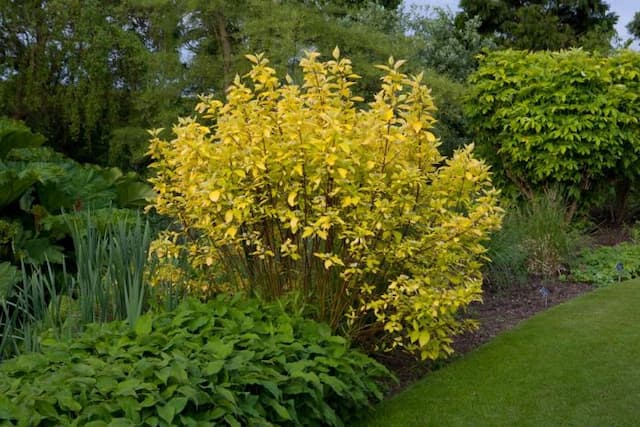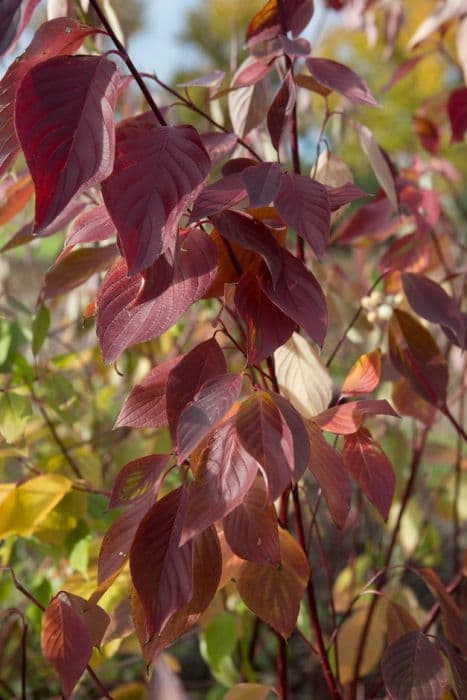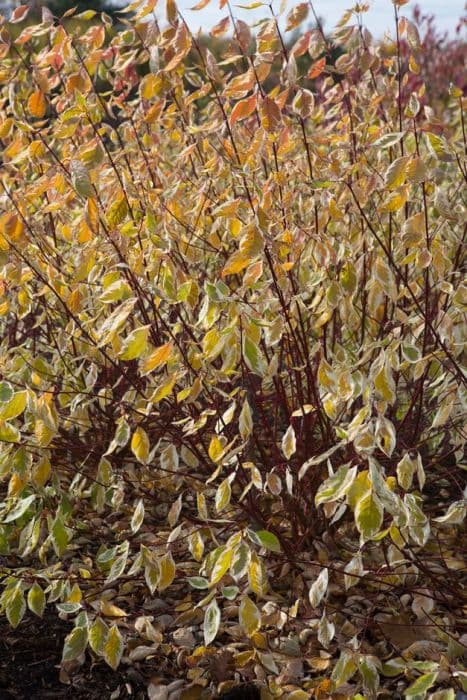Cornus kousa Radiant Rose = 'Hanros'
![kousa [Radiant Rose]](/_next/image?url=https%3A%2F%2Fplants-admin.emdemapps.com%2Fimages%2Fplants%2F%2Fimages%2F604b5bfd869d0.png&w=3840&q=75)
![kousa [Radiant Rose]](/_next/image?url=https%3A%2F%2Fplants-admin.emdemapps.com%2Fimages%2Fplants%2F%2Fimages%2F606da632b6a42.jpg&w=3840&q=75)
![kousa [Radiant Rose]](/_next/image?url=https%3A%2F%2Fplants-admin.emdemapps.com%2Fimages%2Fplants%2F%2Fimages%2F606da632b7cfc.jpg&w=3840&q=75)
![kousa [Radiant Rose]](/_next/image?url=https%3A%2F%2Fplants-admin.emdemapps.com%2Fimages%2Fplants%2F%2Fimages%2F606da632b8b80.jpg&w=3840&q=75)
![kousa [Radiant Rose]](/_next/image?url=https%3A%2F%2Fplants-admin.emdemapps.com%2Fimages%2Fplants%2F%2Fimages%2F606da632b9b12.jpg&w=3840&q=75)
![kousa [Radiant Rose]](/_next/image?url=https%3A%2F%2Fplants-admin.emdemapps.com%2Fimages%2Fplants%2F%2Fimages%2F606da632bab9b.jpg&w=3840&q=75)
![kousa [Radiant Rose]](/_next/image?url=https%3A%2F%2Fplants-admin.emdemapps.com%2Fimages%2Fplants%2F%2Fimages%2F606da632bbc15.jpg&w=3840&q=75)
![kousa [Radiant Rose]](/_next/image?url=https%3A%2F%2Fplants-admin.emdemapps.com%2Fimages%2Fplants%2F%2Fimages%2F606da632bcb7c.jpg&w=3840&q=75)
![kousa [Radiant Rose]](/_next/image?url=https%3A%2F%2Fplants-admin.emdemapps.com%2Fimages%2Fplants%2F%2Fimages%2F606da632bda29.jpg&w=3840&q=75)
![kousa [Radiant Rose]](/_next/image?url=https%3A%2F%2Fplants-admin.emdemapps.com%2Fimages%2Fplants%2F%2Fimages%2F606da632becc0.jpg&w=3840&q=75)
![kousa [Radiant Rose]](/_next/image?url=https%3A%2F%2Fplants-admin.emdemapps.com%2Fimages%2Fplants%2F%2Fimages%2F606da632bfdb8.jpg&w=3840&q=75)
ABOUT
The Radiant Rose, a variety of Kousa dogwood, is a delightful ornamental tree celebrated for its impressive display of floral and foliage beauty. A distinctive characteristic of this plant is its abundant flower-like bracts, which captivate onlookers. These bracts initially present a creamy white hue before gradually transitioning to a vivid, rosy pink color, exuding a sense of warmth and vibrance. The bracts surround small, inconspicuous clusters of yellow-green true flowers that add to the charm of the display. As the seasons change, the foliage of the Radiant Rose emerges with a fresh, green color that serves as a lovely backdrop for the floral show. As the year progresses, the leaves mature into a deeper, robust green, creating a dense and lush canopy that provides a pleasant shade. With the arrival of autumn, the leaves take on a spectacular metamorphosis, adopting shades of red and purple that add a fiery flair to the landscape. The Radiant Rose also produces berry-like fruits after the flowering period. These fruits are initially green, then mature into a bright pinkish-red hue, and can persist into the winter, adding yet another layer of interest to the plant. They are attractive to birds and other wildlife, which find the fruit highly appealing. The bark of the Radiant Rose is an attractive feature in its own right, with a mottled exfoliating texture that reveals underlying tones of brown and gray, providing visual interest even in the dormant season. Overall, the Radiant Rose is prized for its multi-seasonal display of flowers, fruit, and foliage, with a picturesque quality that adds ornamental value to gardens and landscapes throughout the year.
About this plant
 Names
NamesFamily
Cornaceae.
Synonyms
Kousa Dogwood, Korean Dogwood, Chinese Dogwood, Japanese Dogwood, Radiant Rose Dogwood.
Common names
Cornus kousa Radiant Rose 'Hanros'.
 Toxicity
ToxicityTo humans
Kousa Dogwood, including the 'Hanros' cultivar, is not considered toxic to humans. In fact, the fruit of Kousa Dogwood is edible and sometimes used in jams and wines. No significant toxicity is associated with the plant for humans, and ingesting parts of it, including the fruit, should not lead to any harmful consequences.
To pets
Kousa Dogwood is also generally considered non-toxic to pets. There is no widespread evidence of toxicity in dogs, cats, or other animals from ingesting parts of this plant. Thus, consuming Kousa Dogwood should not result in poisoning or serious health consequences for pets. However, ingestion of plant material can sometimes lead to gastrointestinal upset in some pets, so it is always a good practice to keep an eye on your pet and consult with a veterinarian if you observe any unusual behavior or symptoms.
 Characteristics
CharacteristicsLife cycle
Perennials
Foliage type
Deciduous
Color of leaves
Green
Flower color
Pink
Height
15 feet (4.57 meters)
Spread
15 feet (4.57 meters)
Plant type
Tree
Hardiness zones
5-8
Native area
Asia
Benefits
 General Benefits
General Benefits- Aesthetic Appeal: The Cornus kousa 'Radiant Rose', also known as Kousa dogwood, offers visual interest with its unique pink to rose-red flower bracts that bloom in late spring and early summer.
- All-Season Interest: In addition to the striking spring blossoms, it provides multiseasonal interest with red fruit in late summer and vibrant autumn foliage.
- Drought Tolerance: Once established, the Kousa dogwood is quite drought-tolerant, requiring less frequent watering than some other ornamental trees.
- Disease Resistance: This variety of dogwood is resistant to many of the diseases that affect other dogwoods, such as dogwood anthracnose and powdery mildew.
- Pest Resistance: It is also less prone to issues with common pests, providing a hassle-free addition to the landscape.
- Habitat Support: The tree produces berries that are attractive to birds, offering a food source and encouraging avian biodiversity in the garden.
- Compact Size: It's a great choice for residential landscapes due to its medium size and relatively slow growth, fitting well in smaller yards without overwhelming the space.
- Low Maintenance: Requiring minimal pruning and care once established, Kousa dogwood is an ideal low-maintenance plant for gardeners at any skill level.
- Cultural Significance: Being a showy and culturally significant tree in many parts of the world, it adds a layer of traditional aesthetic to a garden.
 Medical Properties
Medical PropertiesThis plant is not used for medical purposes.
 Air-purifying Qualities
Air-purifying QualitiesThis plant is not specifically known for air purifying qualities.
 Other Uses
Other Uses- Edible Fruit Ingredient: The fruit of the Kousa dogwood can be used to make jellies, jams or wines, offering a unique flavor different from more traditional fruits.
- Photography Subject: Due to its vibrant flowers and unique structure, the Kousa dogwood can be an interesting subject for botanical photographers.
- Summer Shade Provider: Strategically planting Kousa dogwood trees can create shaded areas in gardens, reducing the need for umbrellas or shade screens.
- Natural Bird Feeder: The tree provides edible berries that attract and feed various bird species.
- Cultural Symbolism: In some cultures, the Kousa dogwood is considered a symbol of purity and is planted in memory gardens or as part of ceremonial landscapes.
- Educational Tool: The distinct four-season interest of the Kousa dogwood, including flowers, fruits, fall color, and exfoliating bark, makes it an excellent specimen for educational purposes in botany and horticulture classes.
- Woodworking Material: Although not commonly used, the hard wood of the Kousa dogwood can be utilized in crafting small woodworking projects, such as inlays or tool handles.
- Festival Decoration: In areas where the Kousa dogwood is widely grown, its branches and flowers can be used as decor for spring festivals or during the blooming season.
- Holiday Arrangements: The bright red fruits and glossy green leaves can be used to create natural holiday decorations, such as wreaths or table centerpieces.
- Companion Planting: The Kousa dogwood can be used in companion planting to enhance the overall biodiversity of a garden, attracting pollinators and beneficial insects.
Interesting Facts
 Feng Shui
Feng ShuiThe Kousa dogwood is not used in Feng Shui practice.
 Zodiac Sign Compitability
Zodiac Sign CompitabilityThe Kousa dogwood is not used in astrology practice.
 Plant Symbolism
Plant Symbolism- Transformation and Renewal: Cornus kousa, commonly known as Kousa dogwood, often symbolizes transformation and renewal due to its ability to change significantly throughout the seasons, flowering in spring and displaying vibrant foliage in the fall.
- Purity and Innocence: The radiant white blossoms of the Kousa dogwood are often associated with purity and innocence, similar to the symbolism of white flowers in various cultures.
- Christian Symbolism: In Christian symbolism, the dogwood is associated with the crucifixion of Jesus, with legend holding that the tree was once large and strong enough to be used to make crosses, leading to its current delicate form as a reminder of the sacrifice.
- Endurance and Strength: Despite its delicate appearance, the Kousa dogwood is known for its hardiness and ability to withstand challenging conditions, symbolizing endurance and inner strength in the face of adversity.
- Love and Affection: The heart-shaped bracts of the Kousa dogwood blooms can also represent love and affection, making it a plant that is often associated with romantic gestures or the expression of fondness.
 Water
WaterThe Kousa dogwood 'Radiant Rose' should be watered deeply once a week, providing approximately 1 to 1.5 inches of water each time. In hot, dry periods, it may require additional water, possibly twice a week, to maintain consistent soil moisture. The goal is to keep the soil moist but never waterlogged. Water directly at the base of the plant using a hose or a watering can, avoiding overhead watering which can lead to leaf diseases. During winter, reduce watering since the plant requires less moisture due to dormancy.
 Light
LightKousa dogwood 'Radiant Rose' thrives in conditions that offer full sun to partial shade. It prefers a spot that receives about 4 to 6 hours of direct sunlight daily, but it can tolerate light shade, especially during the hottest part of the day. Avoid placing it in deep shade, as this can lead to poor flowering and foliar problems.
 Temperature
TemperatureThe Kousa dogwood 'Radiant Rose' performs best in temperatures that range between 60 to 75 degrees Fahrenheit. It is hardy in colder temperatures and can survive in zones 5 to 8, which typically means it can withstand winter lows down to -20 to -10 degrees Fahrenheit. Extreme heat above 95 degrees Fahrenheit can be stressful for the plant, so provide some afternoon shade in hotter climates.
 Pruning
PruningPrune the Kousa dogwood 'Radiant Rose' to maintain its shape and remove any dead or damaged branches. The best time for pruning is in late winter or early spring before new growth starts. It typically requires pruning every 2 to 3 years to encourage healthy growth and vibrant flowering. Thinning out the branches can also increase light penetration and air circulation, benefiting the overall health of the plant.
 Cleaning
CleaningAs needed
 Soil
SoilKousa Dogwood 'Radiant Rose' requires well-draining soil enriched with organic matter, with a slightly acidic to neutral pH of 5.5 to 7.0. A mix containing loamy soil, compost, and pine bark or leaf mold is ideal to ensure proper drainage and nutrient content.
 Repotting
RepottingKousa Dogwood 'Radiant Rose' is typically planted in the ground rather than in containers and doesn't require frequent repotting. If grown in a container, it should be repotted every 2-3 years to refresh the soil and accommodate root growth.
 Humidity & Misting
Humidity & MistingKousa Dogwood 'Radiant Rose' prefers average humidity levels consistent with its natural outdoor environment. Excessively high humidity can lead to fungal issues, so ensuring good air circulation is key for plant health.
 Suitable locations
Suitable locationsIndoor
Ensure bright, indirect light and cool temps.
Outdoor
Plant in partial shade, protect from harsh winds.
Hardiness zone
5-8 USDA
 Life cycle
Life cycleThe life of the Kousa Dogwood 'Radiant Rose' begins with seed germination, where the seeds stratify through a period of cold before they sprout in spring. Following germination, the seedling stage is characterized by the development of primary leaves and a root system, enabling the plant to photosynthesize and grow. As the plant matures into a sapling, it develops a woody stem and begins to form its characteristic branching structure. Full maturity is achieved in several years, with the tree now exhibiting prolific flowering, typically in late spring to early summer, with showy, pink-tinged white blooms. After flowering, the tree produces berry-like fruits which ripen by late summer to early fall, and these fruits are then dispersed, often by birds, which can result in new seedlings if conditions allow. The Kousa Dogwood 'Radiant Rose' can live for decades, experiencing cycles of growth, flowering, and fruiting annually.
 Propogation
PropogationPropogation time
Early Spring
Propogation: The Cornus kousa 'Radiant Rose', commonly referred to as Kousa Dogwood, is typically propagated by semi-hardwood cuttings. The optimal time for taking these cuttings is in the late summer when the wood has begun to mature but is not yet entirely hard. To propagate by this method, a gardener would cut a section of the plant's stem that includes at least two sets of leaves. This cutting, usually about 4 to 6 inches (10 to 15 centimeters) long, is then treated with rooting hormone to encourage root development and planted in a mix of peat and perlite to provide a well-draining yet moist environment. The cutting should be kept under intermittent mist to maintain high humidity, which is crucial for encouraging root growth. Roots typically begin to form in a few weeks, at which point the new Kousa Dogwood can be gradually acclimated to less humid conditions before being planted out.

![Dogwood [Baton Rouge]](/_next/image?url=https%3A%2F%2Fplants-admin.emdemapps.com%2Fimages%2Fplants%2F%2Fimages%2F604b59cf0fefd.png&w=640&q=75)


![Dogwood [Ivory Halo]](/_next/image?url=https%3A%2F%2Fplants-admin.emdemapps.com%2Fimages%2Fplants%2F%2Fimages%2F604b535cbcb9a.png&w=640&q=75)




